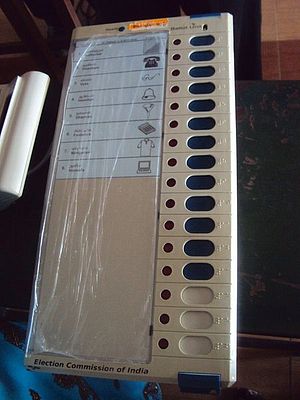In the month since the Municipal Corporation of Delhi (MCD) elections were held, where the ruling Bharatiya Janata Party (BJP) swept the polls, a recurrent debate over electronic voting machines (EVMs) has been running hot in India. The Aam Aadmi Party (AAP) blamed EVM tampering for its loss in those elections and debate on this point may finally be put to rest by early June 2017.
BJP leaders have gone on record to say that the results were a seal of approval for their governance in the national capital and denied that the elections were anything but fair. Meanwhile, the Congress party, which faced a shattering defeat, saw local leaders take responsibility for their loss and offer to resign. The AAP on the other hand squarely stated that its defeat was a programmed and bugged victory, questioning the State Election Commission (SEC) and meting out allegations of fraud to shift blame for their loss.
Initially, at a party leaders’ meet at AAP chief Arvind Kejriwal’s residence, it appeared that the party might change track since a significant proportion of their lawmakers had declared that they were prepared for a loss. However subsequently, after a demonstration where the AAP apparently managed to hack a replica EVM, allegations resurfaced in early May 2017. The Election Commission (EC) slammed and rejected these allegations, indicating that the machine was a mere replica and that the originals were foolproof.
The AAP then held a so-called live demonstration of EVM tampering, where legislator Saurabh Bhardwaj declared that a simple change in the motherboard of the EC’s EVMs could have allowed for manipulation. However, as subsequent media reportage has argued, this could have only happened at the scale the AAP suggests if the EC had colluded in the process.
While the EC rejected the AAP’s claims, the latter in turn called for an all-party probe. Finally, a hackathon was announced, where parties will be offered a chance to prove that machines used in the recent elections, under the same stringent conditions, could be tampered with. The Chief Election Commissioner also declared that future EVMs shall have voter verifiable paper audit trails (VVPATs) to prevent fraud.
Ahead of this, the EC put together a demonstration of how EVMs work, even as some parties tried to push for a reversion to the old paper ballot system. The hackathon has been scheduled to begin on June 3, and both national and regional parties have been invited to nominate three people for the challenge. The Chief Election Commissioner has further responded extensively to questions regarding the foolproof nature of EVMs – tackling allegations at the levels of manufacturing, connectivity, and security. The AAP in the meanwhile has already started to push the EC on the kinds of restrictions placed on the hackathon.
It would be unfair to dismiss this exercise as futile, as a test to the robustness of the electoral process is always welcome. But the AAP’s insistence that the EVMs are the sole overwhelming reason for their loss also makes this more political posturing than a test for India’s democracy. If the hackathon demonstrates a flaw in the machines, this exercise becomes effective and might open up the space for fixing important lacunae in elections.
If the hackathon however shows the machines to be foolproof, this debate will not come to an easy end. The EC and the winning parties have the leverage to silence allegations that may crop up in the immediate feature. The AAP is unlikely to admit defeat and more likely than not will continue to question the process.

































